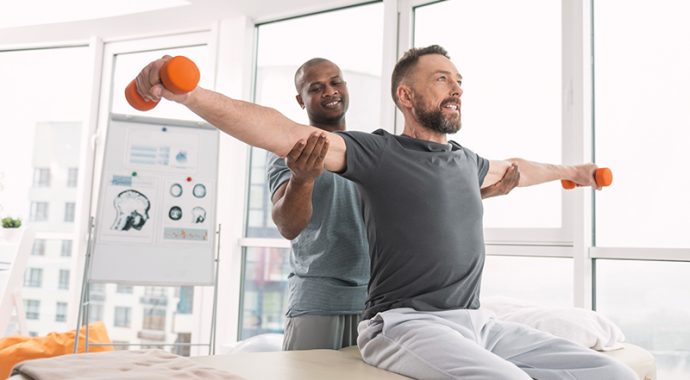
By Elizabeth LaScala, PhD
Once you familiarize yourself with the Physical Therapist Centralized Application Service (PTCAS) website, you will see there are many options for Doctor of Physical Therapy (DPT) programs. Here are seven factors you should consider when choosing a program.
PTCAS:
Most PT programs in the US use the Physical Therapist Centralized Application Service (PTCAS). This online portal allows you to upload all your information to one place, making it easy to apply to multiple programs. But this site is much more than an application portal. It is a centralized location for important information you will need to decide which program is right for you.
Each program’s PTCAS page will have helpful information including:
- General information (contact information, class size, start date, percentage of in-state vs. out-of-state students)
- Deadlines (actual deadlines, deadline type, and whether they participate in Early Decision)
- Requirements (observation hours, GRE, GPA)
- Course prerequisites (what classes they require and accept)
There is also a particularly awesome map function that lets you see where programs are throughout the US.
1. Location
Location is an important factor for many people. Do you want to be near the beach or in the mountains? Do you prefer big cities or rural areas? Do you want to be close to family? You’ll be spending three years at your program, so be sure the location is a good fit. You also want to consider the area’s cost of living.
2. Start date
Programs generally have winter/spring start dates (January/May) or summer/fall start dates (June/August). Winter/spring start dates are only really feasible for individuals planning on taking a gap year. Be sure to find a program that matches your schedule and overall plan. Alternatively, you can set up your schedule to match the admissions cycle for the program of your choice.
3. Prerequisite and observation requirements
Prerequisite requirements, like the courses, credit hours, and lab requirements, will be stated on the program’s PTCAS page, including a list of accepted courses that would fulfill each prerequisite. Be sure that you do or will meet these conditions. Most programs only allow a few courses to be “in-progress” when you submit your application, so don’t apply to programs for which you cannot realistically meet the prerequisites.
Most PTCAS programs also have observation hour requirements. They will specify the amount of outpatient or inpatient hours and whether they accept/consider paid hours. While some schools may accept hours that are in-progress, it’s always better to have more hours than the program states. Your observations should be in a variety of settings, like geriatric, inpatient, outpatient orthopedics, and outpatient pediatric.
4. Accreditation
The Commission on Accreditation in Physical Therapy Education (CAPTE) is the accrediting body of PT programs in the US. To become a licensed PT, you must have graduated from a CAPTE-accredited program. You may be tempted to apply to a newer program that is not yet accredited in hopes that it will become accredited before graduation. However, it’s safer to only consider established programs.
5. NPTE pass rates
The National Physical Therapy Exam (NPTE) is a certification that you must pass to become licensed. Since passing this exam is an absolute must, be sure to check each program’s NPTE pass rates. If pass rates are not clearly stated, contact the programs you are interested in for more information.
6. Curriculum and clinical experience
Find a program that fits what you love most about PT. Does the program emphasize problem-based learning? Do they teach by body system or by body part? Can you take elective courses? Is group work emphasized? What about research? Outside of coursework, what type of clinical experiences are offered? How many rotations are required, and do you get to choose your rotations? Be sure the kind of training you enjoy is what is offered – otherwise, don’t apply.
7. Mission
The values and mission of a program influence how the program is run. Read each program’s mission statement and get a feeling for the personality of the program. You will be happier in a program that shares your values.
PTCAS:
Most PT programs in the US use the Physical Therapist Centralized Application Service (PTCAS). This online portal allows you to upload all your information to one place, making it easy to apply to multiple programs. But this site is much more than an application portal. It is a centralized location for important information you will need to decide which program is right for you.
Each program’s PTCAS page will have helpful information including:
- General information (contact information, class size, start date, percentage of in-state vs. out-of-state students)
- Deadlines (actual deadlines, deadline type, and whether they participate in Early Decision)
- Requirements (observation hours, GRE, GPA)
- Course prerequisites (what classes they require and accept)
There is also a particularly awesome map function that lets you see where programs are throughout the US.



